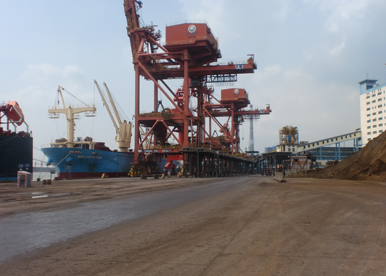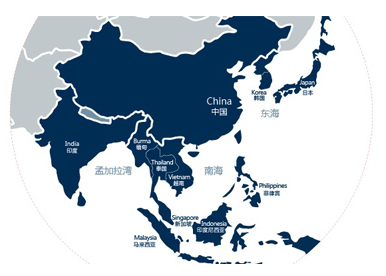Recently, the overall demand for China's export container transportation market has been sluggish, and route freight rates have fallen across the board!
Recently, the overall demand for China's export container transportation market has been sluggish, and route freight rates have fallen across the board!
Due to the basic digestion of pre holiday hoarding, while factory production still needs to be restored, the transportation demand in China's export container transportation market is in a state of oversupply, with overall low demand and a decline in the utilization rate of various shipping routes. Affected by this, market competition has intensified, and spot market booking rates have fallen across the board. On March 2nd, the Shanghai Shipping Exchange released the Shanghai Export Container Comprehensive Freight Index at 772.45 points, a decrease of 9.6% from the previous period.
On European routes, the recovery of market transportation demand is relatively low. Although there are still large-scale capacity suspension plans in the market, due to a large capacity base and a significant shortage of cargo volume, the utilization rate of some flight seats has dropped to below 80%. At the same time, due to the expectation that the speed of capacity recovery will be faster than the speed of demand recovery, many airlines are bearish on the recent market performance and have actively lowered freight rates to strengthen cargo acquisition efforts, resulting in a general decline in spot market booking freight rates. On March 2nd, the freight rates (sea freight and sea freight surcharges) for Shanghai's exports to the European and Mediterranean basic port markets were $827/TEU and $721/TEU, respectively, a decrease of 9.7% and 9.5% compared to the previous period.
The pre holiday hoarding of goods on North American routes has been largely digested, but due to the slow progress of factory resumption, the market's new transportation demand is seriously insufficient. In terms of transportation capacity, there are still large-scale suspension measures in the market, with some airlines suspending flights by more than 30%. However, the deterioration of supply and demand has not been prevented, and the utilization rates of most flights on the US West and East routes have dropped to below 70% and 80%, respectively. Due to limited competition for cargo sources, airlines are competing to adjust prices, resulting in a significant drop in spot market booking rates. On March 2nd, the freight rates (sea freight and sea freight surcharges) for Shanghai's exports to the US West and East basic port markets were $1252/FEU and $2375/FEU, respectively, a decrease of 11.3% and 12.3% compared to the previous period.
The transportation demand of the Persian Gulf route remains weak, and due to the lack of capacity control measures, the supply and demand relationship of the route continues to be sluggish. The average utilization rate of ship space at Shanghai Port is less than 80%. Multiple airlines have followed up with market price reductions, resulting in a downward pressure on market prices. On March 2nd, the freight rate (sea freight and sea freight surcharge) for Shanghai's exports to the Persian Gulf basic port market was $465/TEU, a significant decrease of 18.6% compared to the previous period.
The market demand for the Australia New Zealand route is weak after the holiday, and the utilization rate of ship cabins at Shanghai Port continues to decline. Due to the widening demand gap, airlines have increased their efforts in cargo procurement, leading to an accelerated decline in market freight rates. On March 2nd, the market freight rate (sea freight and sea freight surcharge) from Shanghai to the basic port of Australia and New Zealand was $1136/TEU, a decrease of 10.1% from the previous period.
On South American routes, there is insufficient market transportation demand, and due to the different control measures of airline capacity, the utilization rate of cabin space on various shipping flights has generally declined and differentiated. Due to the overall weakening of supply and demand fundamentals, spot market freight rates have failed to maintain their previous stable trend, resulting in a general decline. On March 2nd, the freight rate (sea freight and sea freight surcharge) for exports from Shanghai to the South American base port market was $2309/TEU, a decrease of 9.1% from the previous period.
The Japanese route saw a decrease in cargo volume this week, leading to a decrease in market freight rates. On March 2nd, the freight index for Chinese exports to Japan was 715.83 points, a decrease of 1.2% from the previous period.
Ranking of similar articles
- 深圳口岸经营服务企业收费公示单
- 巴拿马运河下月将迎来最大集装箱船
- 全球船厂手持订单量大幅下降
- 四大航运巨头组建数字集装箱航运联盟
- 油船市场将成限硫令的大赢家
- 菲律宾港口巨头或将收购韩进苏比克
- 太古轮船完成收购汉堡南美集团散货业务
- 深圳海盛威物流周刊(2019-3-20)
- 全球首艘极地凝析油轮在广州南沙命名
- 出口值122亿元 舟山外贸出口商品货值“老大”易主
Latest news articles
History









